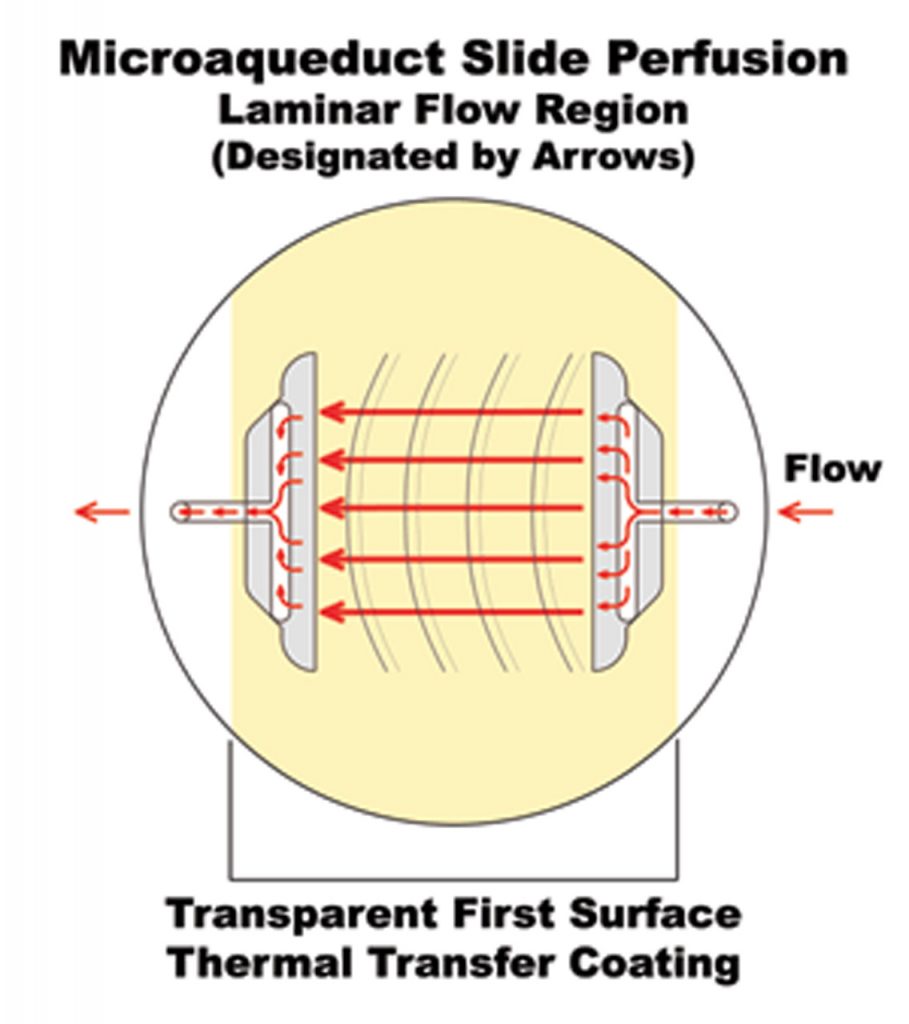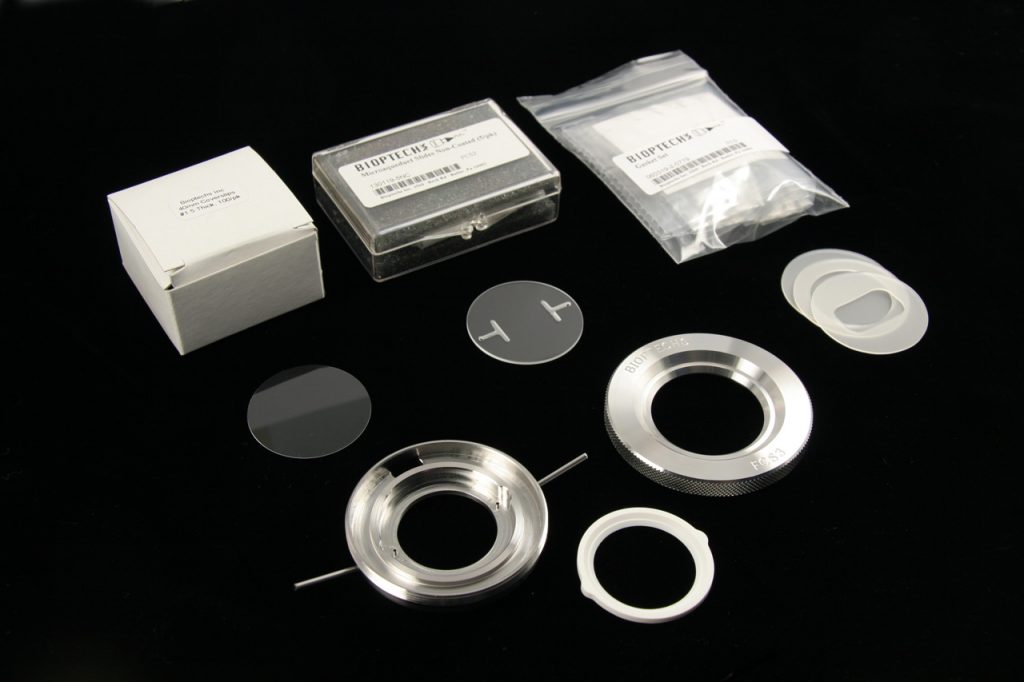A parallel plate, high N.A. compatible, microscopic flow cell with a user definable specimen area for upright microscopes. Includes: FCS3 Chamber, 5 Micro aqueduct Slides, 100 #1.5 – 40mm German Desag 263 Coverslips, and 30 piece Gasket Set
$2,864.25
The Focht Chamber System 3 (FCS3 ®) is a closed system, live-cell micro-observation flowcell chamber that offers several advantages over other chambers. It is fully compatible with all modes of microscopy. It is also the only chamber to combine high-volume laminar flow perfusion rates with Koehler illumination without an air curtain. Its user definable flow characteristics make it adaptable to nearly any protocol where cells are perfused in a flow-cell. Also available with temperature control as the Standard FCS3 Chamber system
FCS3 Chamber No Heat
100 Pack of Coverslips #1.5
30 Piece Gasket Set
5 non-coated Micro-aqueduct slides
Pressure plate
Spanner wrench
The FCS3 is a flow cell or flow chamber that is designed specifically for the demands of today’s live-cell imaging requirements. It has limitless flow characteristics because its flow geometry can easily be customized by the user. It can provide low shear near laminar flow as well as high shear in a directed flow and anything in between. The most important feature of the FCS3 is that there is a precise directed flow of media over the cells. Open dish type chambers do not provide the flow capabilities of the FCS3. The FCS3 provides an optical imaging cavity where the user can precisely define the optimum flow characteristics necessary for the experiment.FCS3 users enjoy the following characteristics:
How does it work?
Cells are grown on a 40mm glass coverslip. This coverslip is then incorporated into a perfusable fluid optical cavity that is compatible with all modes of microscopy, and its geometry can be easily defined by the user. This optical cavity is secured into a fixture on the stage of the microscope where media can be perfused or remain static.
When media enters the chamber it emerges into a fluid optical path where the media is precisely directed over the cells. The media is collected within the optical cavity and directed out of the chamber on the other side. The flow characteristics of the media in the optical cavity are easily modified by selecting gaskets of varying geometry that direct the flow.



3560 Beck Road
Butler, PA 16002
U.S.A.
sales@bioptechs.com
1-877-877-LIVE-CELL (548-3235)
(United States & Canada)
Direct: +1-724-282-7145
(United States & International)